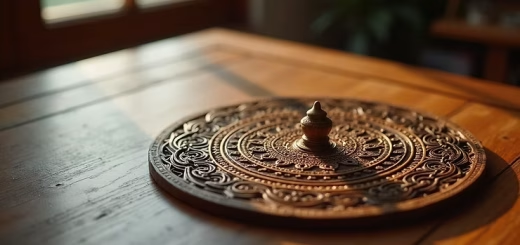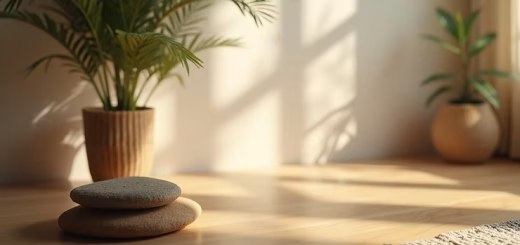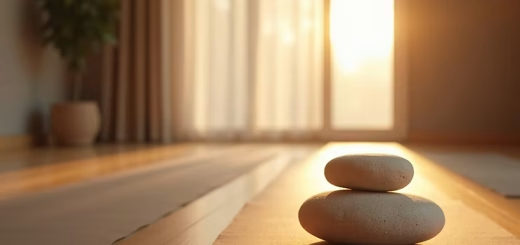Using Breath Techniques in Tantra

Breathing: A Lifeline for Calmness and Balance
- Breathing: A Lifeline for Calmness and Balance
- Understanding the Connection Between Breath and Emotions
- Basic Breathing Techniques in Tantra
- Creating an Ideal Environment for Breathwork
- Setting Intentions for Breathwork
- Cultivating Mindfulness and Breath Awareness
- Incorporating Breath Techniques into Everyday Life
- The Positive Impact of Breath in Tantra
- Embracing Your Breath Journey
Using Breath Techniques in Tantra: Breathing is more than a mere bodily function; it serves as the bridge connecting our body, mind, and spirit. In tantra, breath becomes a powerful instrument for achieving calmness and balance. Researchers have found that deep, controlled breathing can lower cortisol levels, the stress hormone, by about 30%. Understanding how to effectively use breath can lead to significant improvements in your mental and emotional well-being.
In this post, we will explore various breathwork techniques rooted in tantra and discover how you can cultivate a deeper state of peace and presence in your life.
Understanding the Connection Between Breath and Emotions
Breathing is closely tied to our feelings. For example, when we feel anxious or stressed, our breath tends to become shallow and quick. Conversely, during moments of calm, our breathing shifts to a deeper, more controlled rhythm. Tantric practices highlight that by actively engaging with our breath, we can influence our emotional states in a positive way.
Recognizing this connection is crucial for using breath as a tool for calmness. By consciously altering our breath, we can invoke a sense of tranquility that can enhance our overall sense of well-being.
Basic Breathing Techniques in Tantra
In tantric practices, several effective breathing techniques exist to help foster a state of calm. Below are some fundamental techniques you can start with:
1. Diaphragmatic Breathing
Diaphragmatic breathing, also known as belly breathing, focuses on the diaphragm’s movements. This technique involves inhaling deeply through the nose, allowing the belly to rise, and exhaling slowly through the mouth, feeling the belly fall.
Benefits: Research indicates that practicing diaphragmatic breathing can lower heart rates and decrease stress levels. Incorporating this technique into your daily routine can lead to significant changes in your mental and emotional health.
2. Ujjayi Breathing
Ujjayi breathing, often utilized in yoga, involves slightly constricting the back of the throat to create a soft, ocean-like sound while inhaling and exhaling.
This technique allows practitioners to maintain focus on their breath, which can enhance meditation and lead to a more peaceful state of mind. Even just a few minutes of Ujjayi breathing can provide grounding and clarity, making it especially effective during stressful moments.
3. Alternate Nostril Breathing
Also known as Nadi Shodhana, this technique involves closing one nostril with a finger, inhaling through the other, then switching for the exhale. This practice is believed to harmonize the body’s energy channels and balance the nervous system.
Impact: Studies have shown that alternate nostril breathing can significantly reduce anxiety levels and promote a feeling of calm. This method is particularly beneficial during chaotic or stressful times.
Creating an Ideal Environment for Breathwork
To ensure that you reap the full benefits of these breathing techniques, it’s essential to create a peaceful environment for your practice. Here are some practical suggestions:
1. Choose a Quiet Location
Find a serene spot where you won’t be disturbed. Whether indoors or outdoors, a peaceful setting greatly enhances your practice.
2. Set the Right Atmosphere
Consider using dim lighting or candles. If you like, incorporate essential oils or incense for a calming scent that can enhance your overall experience.
3. Use Comfortable Seating
Opt for a position that allows you to relax. Whether you sit in a chair, on a cushion, or lie down, ensure your body is comfortable.
Setting Intentions for Breathwork
Establishing a clear intention is crucial in the practice of tantra and breath techniques. A specific goal gives purpose to your session and helps channel your energy towards achieving calmness.
Before you begin your breathwork, take a moment to reflect on what you wish to accomplish. Having a clear intention can enhance the effectiveness of your practice.
Cultivating Mindfulness and Breath Awareness
Mindfulness involves being present at the moment. By focusing on your breath, you can better connect with your body and emotions. This practice requires you to tune into the sensations of your breath as it flows in and out.
How to Bring Mindfulness into Your Breathwork
- Focus on Sensations: Pay attention to the coolness of the air entering your nostrils and the warmth as you exhale.
- Let Go of Distracting Thoughts: Acknowledge any thoughts without self-judgment and allow them to pass.
- Return Your Awareness: If your mind wanders, gently guide your focus back to your breath.
Practicing mindfulness while engaging with your breath can significantly strengthen your ability to maintain calm, even during emotional upheavals.
Incorporating Breath Techniques into Everyday Life
Once you have familiarized yourself with various breath techniques, you can easily weave them into your daily routine. Here are some practical ways to use breathwork outside of a formal setting:
1. Start Your Day Mindfully
Begin your morning with a few minutes of breathwork to establish a sense of calm. Techniques like diaphragmatic or Ujjayi breathing can help center you before facing daily tasks.
2. Manage Stress Instantly
Whenever stress arises, take a moment to pause and practice alternate nostril breathing. Just a few focused breaths can help you regain clarity and control.
3. Prepare for Sleep
Add breathwork to your nighttime routine. Engaging in calming techniques can aid relaxation and ease the transition into sleep. Practicing diaphragmatic breathing as you settle down can be especially effective.
The Positive Impact of Breath in Tantra
With regular practice, breath techniques in tantra can lead to powerful transformations. Beyond promoting calmness and balance, these practices can enhance self-awareness and emotional intelligence.
As you deepen your experience, you may notice improved focus and emotional regulation. Many practitioners also report an overall increase in well-being.
A tranquil indoor setting designed for relaxation and meditation.
Embracing Your Breath Journey
Integrating breathing techniques from tantra into your life can significantly impact your emotional and mental landscape. By understanding the connection between breath and emotions, practicing essential techniques, and approaching each breath with mindfulness, you can cultivate a deeper sense of calm and balance.
As you embark on this journey, patience and consistency will be your allies. Give yourself the grace to explore these practices fully. Embrace the transformative power of breath, leading you to a more peaceful and balanced life.



























